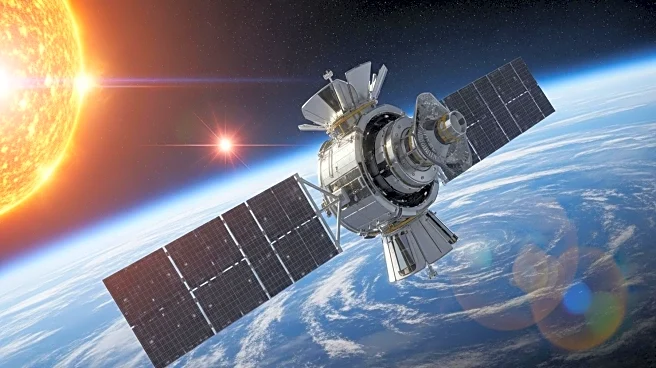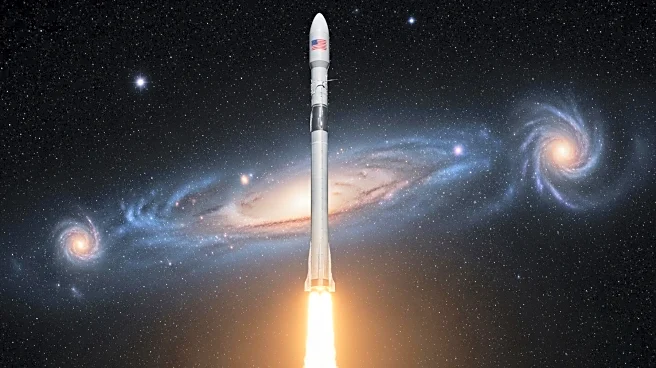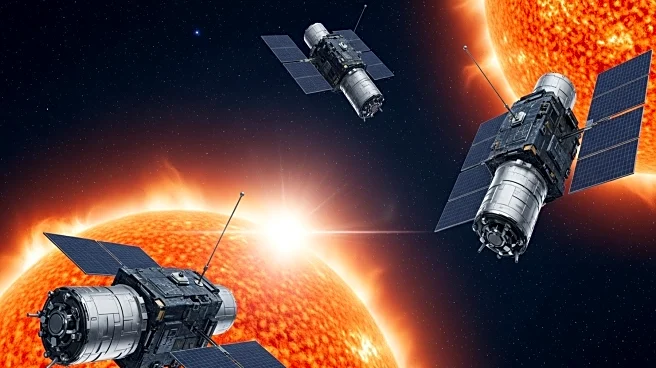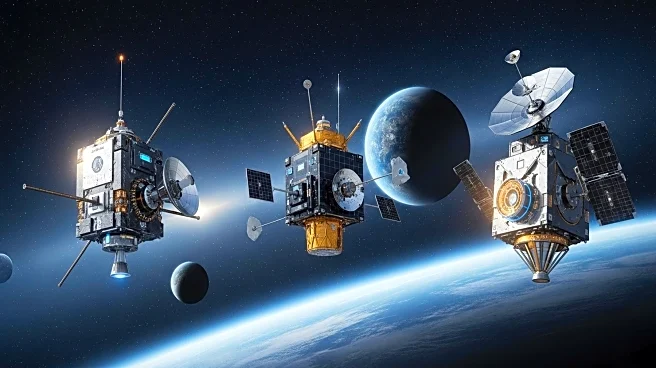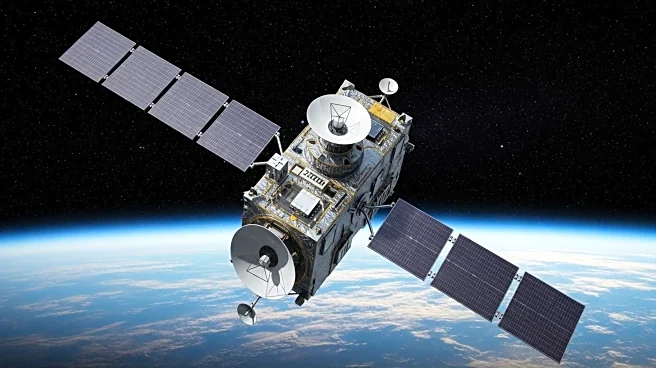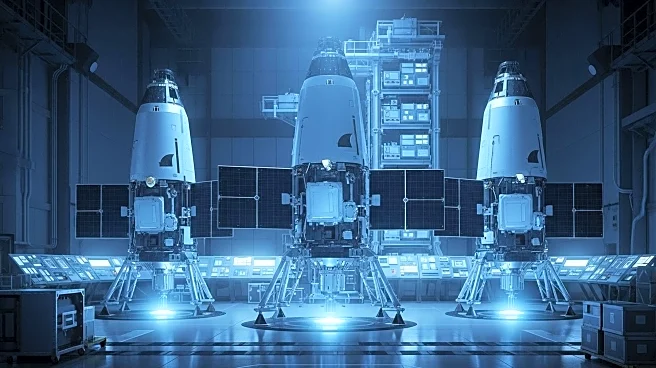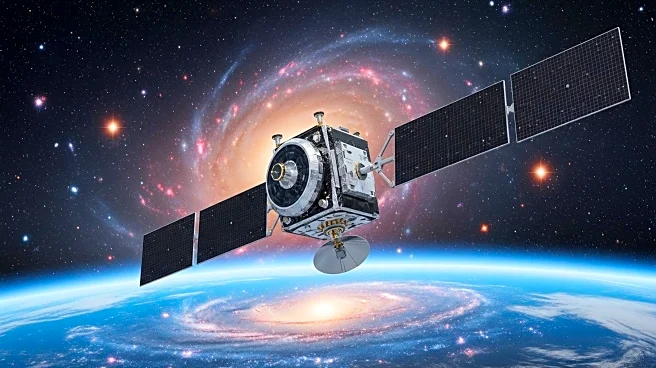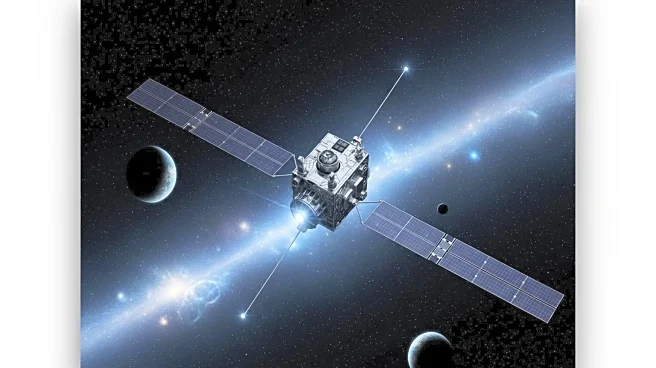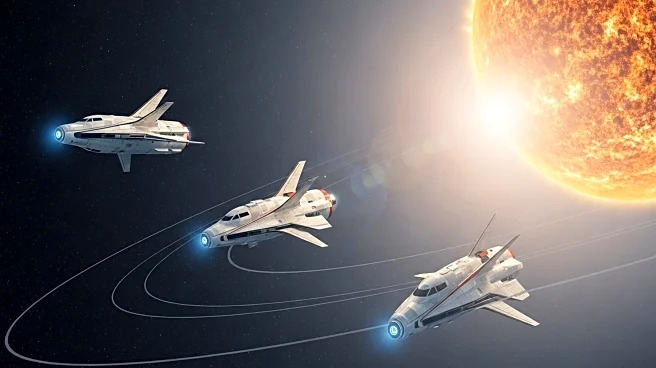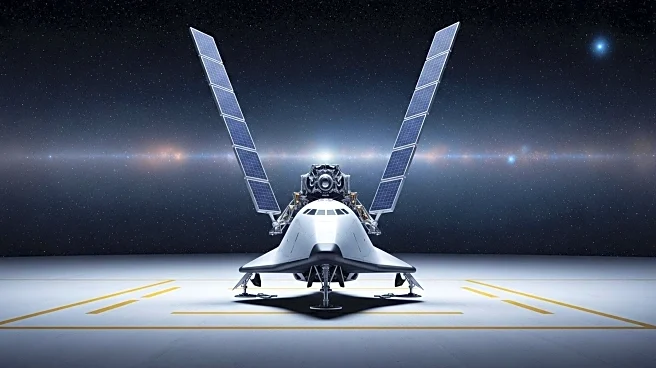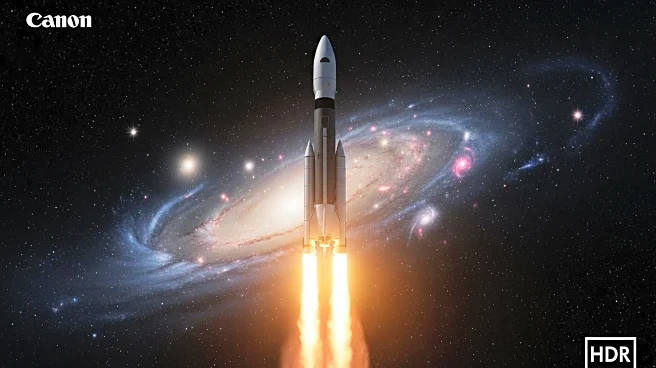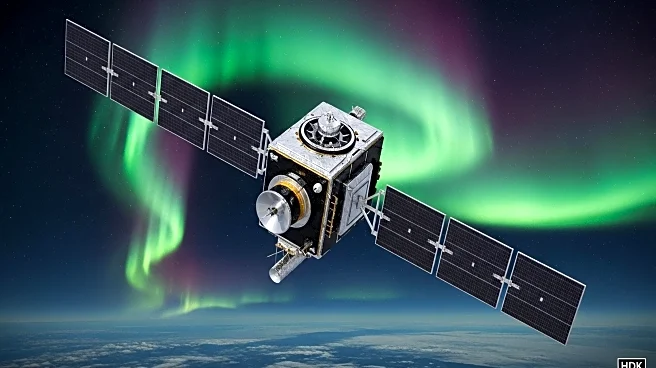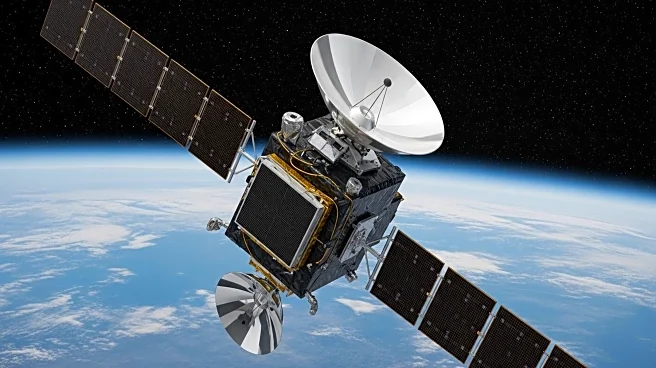What is the story about?
What's Happening?
NASA has launched a new mission named Carruthers Geocorona to study Earth's exosphere, the outermost layer of the atmosphere. This mission aims to capture continuous video footage of the exosphere, which is characterized by a faint ultraviolet glow known as the geocorona. The mission was launched aboard a SpaceX Falcon 9 rocket from Cape Canaveral, Florida, alongside other scientific payloads. The exosphere begins approximately 300 miles above sea level and is primarily composed of hydrogen atoms that interact with solar radiation. Understanding the dynamics of the exosphere is crucial for predicting space weather events that can affect astronauts and future space missions.
Why It's Important?
The study of Earth's exosphere is significant for several reasons. Firstly, it helps in predicting hazardous space weather conditions that can impact astronauts, particularly those involved in missions to the moon and Mars. Secondly, the exosphere plays a role in the escape of hydrogen, a key component of water, which could provide insights into why Earth is abundant in water compared to other planets. This knowledge could also aid in identifying exoplanets with potential water resources. The mission's findings could have implications for space exploration and understanding Earth's atmospheric processes.
What's Next?
The Carruthers Geocorona spacecraft, along with other missions, will travel to Lagrange Point 1, offering an unobstructed view of the sun. After a month of testing, the mission will commence its two-year science phase in March 2026. The data collected will be analyzed to understand the exosphere's response to solar eruptions and its role in space weather phenomena. This research could lead to improved predictions and mitigation strategies for space weather impacts on Earth and future space missions.
Beyond the Headlines
The mission also honors Dr. George Carruthers, who pioneered the study of the geocorona. His work laid the foundation for understanding the exosphere's role in Earth's atmospheric dynamics. The mission's findings could contribute to broader scientific knowledge about atmospheric escape processes and the potential for water on other planets, influencing future astrobiological research.
AI Generated Content
Do you find this article useful?
